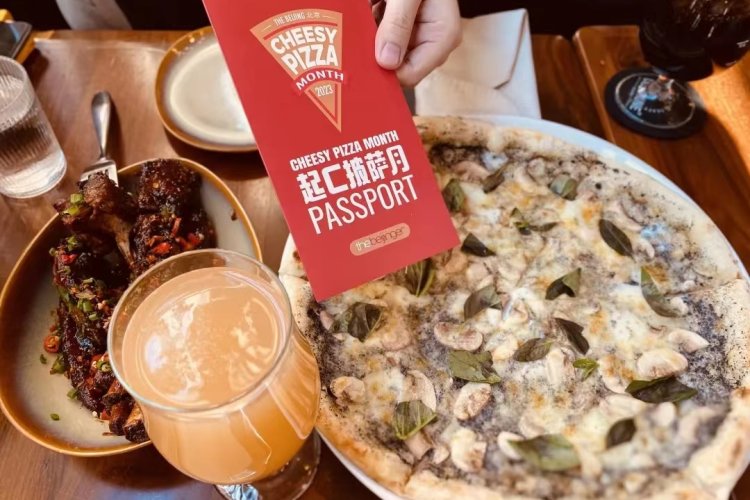Peking Pakora: Indian and Pakistani Cuisine in the Capital
Seems no matter where in the world you wind up, you’re never far from a curry. Last summer I had a damn fine lamb biryani in Ulaanbaatar, of all places. Nowadays, over 20 Indian and Pakistani restaurants crowd Beijing, with more opening up all the time. Have we moved beyond butter chicken? Let’s find out.
NORTHERN EXPOSURE
Thumb through any of Beijing’s Indian menus (or indeed any Indian restaurant from Baltimore to Budapest) and it’s northern-style cuisine that reigns. The Punjabi region strad-dling India and Pakistan is the home of tandoor-baked chicken tikka and naan bread, gravy-based curries like butter chicken, biryanis and dishes featuring paneer (fresh curd cheese). Regions like Kashmir are also represented in dishes such as rogan josh.
The fame and ubiquity of northern fare can mean that other regional styles are often neglected. According to Ganges GM Hetal Hemnani, even in India, more than 60 percent of the dishes on restaurant menus will be northern. Daya Prashad, owner of Mirch Masala, reckons north Indian food is simply easier to handle in the kitchen. “From five bases you can make a thousand dishes, and the curries will keep for a few days.”
At Tadka, the recently rebranded Indian restaurant in the Marriott Northeast, GM Neeraj Govil has another theory. “It’s the tandoor oven. It has huge appeal. I was brought up on Goan food, but if we ever ate out we always wanted tandoori. It was a treat – you couldn’t do it at home.” Samia Asif, co-owner of Pakistani restaurant Mughal’s, offers a simpler explanation: “It’s very tasty!”
BEAUTIFUL SOUTH
“This is the most popular dish in Kerala, but most people have never heard of it,” Chef Mangilal Kurly says as he introduces Tadka’s meen moilee, a fish curry cooked in coconut sauce. “The flavorings are very simple (coconut, mustard seed, curry leaf and chilli) and the fish must be very fresh.” It tastes distinctly lighter and more Southeast Asian than dishes like Goan fish curry, a more commonplace dish in Beijing. A southern dish that’s increasingly popular at Indian Kitchen and Ganges is dosa, a crispy rice crepe served with chutney and sambar, a tangy pea-based stew.
Southern cuisine is known as being the spiciest in India, as Taj Pavillion’s fiery chicken chettinad attests. “It’s a well-known dish from Tamil Nadu, featuring the flavors of coriander, cumin, fennel seeds and coconut,” explains general manager Mehernosh Pastakia.
THE STREETS
Street snacks exemplify a new culinary trend in Beijing. Take Mughal’s Lahori samosa, for instance. “Every Indian restaurant has a samosa, but this is how we serve it in Lahore,” says Asif, as we tuck into a potato samosa that’s been squashed, split and covered with chickpea sauce, tamarind, yoghurt, onion, cucumber and salad.
At Punjabi Indian Restaurant, boss Gireesh Chowdhury has introduced a range of street snacks famous in his native New Delhi. “There’s an old market called Chandni Chowk that is full of amazing street food.” Chowdhury calls in an order of chole bhaturey. “Chole is a paste of potatoes, black chickpeas, pomegranate and spices, and you eat it with a kind of cheese-stuffed bread called bhaturey.” The bread comes out of the kitchen puffed up like a rugby ball, and deflates like a balloon when stabbed with a fork.
Vicky Seth, manager of the Lido branch of Ganges, is proud of his batada vada, one of the most popular snacks in Mumbai. The dish consists of little orbs of mashed potato encased in a spicy chickpea batter and served with spicy and sour dipping sauces.
CHINDIA CALLING
Then there’s “Chindian” cuisine – the dishes you’d order at a Chinese restaurant in India. “It’s very popular with young people, especially in the cities,” says Seth. “It combines the soy flavors of China with the masala flavors of India, plus ginger and garlic. Excellent with beer!”
At Punjabi, Gireesh is eating gobi Manchurian, cauliflower fried with soy and Indian spices. Great for a hangover, he reckons. But why serve “fake” Chinese food in China? “It’s still Indian food!” insists Chowdhury. “Besides, many Indian customers actually prefer this style – they don’t like the local Chinese food. We have more vegetarian dishes too, which is important for Indian customers.”
BRINGING IT ALL BACK HOME
One thing you’ll struggle to experience in a typical Indian restaurant is home cooking, as Daya Prashad explains. “We eat much lighter curries at home. Our stomachs won’t survive if we eat butter chicken every day.”
Asif at Mughal’s says the differences are in cooking time and technique. “We eat kahari at a restaurant and at home. But in a restaurant, the cooking temperature is very high. At home you need maybe one-and-a-half hours to cook a dish.” Surely these slow-cooked dishes taste much better? “Yes, of course! But homestyle dishes are difficult to serve a la carte. In our buffet, I try to introduce some of these slower family recipes.”
Tawa chapattis, on the menu at Ganges, are a rare example of homestyle food on offer in a restaurant. “These soft, easy-to-digest whole wheat breads are made by families all over India every day,” Seth explains.
At Mirch Masala, regional homestyle dishes are available by special request, including family recipes like Bihari chicken curry. “It’s a whole chicken on the bone,” says Prashad. “We cook it from raw to order and throw in whole spices – we don’t grind. It has a strong taste. I’m afraid to put these on the menu – every restaurant owner is. Customers don’t have much patience to enjoy real slow-cooked regional food. They might think the service is bad if it takes a long time to cook.”
IN THE MIX
Another way that restaurants are answering the call for regional diversity is through periodic promotions, as Mehernosh Pastakia explains. “Taj Pavillion’s menu can’t do full justice to each region all the time, but we’ve done a number of promotions featuring specialties from Mumbai, southern India and the Punjabi region, with more coming up next year.” Tadka has similar plans, according to Govil. “In 2012 we will have a different regional promotion each quarter. One will focus on the food of Rajasthan, another will be all about Kerala.” Exciting times certainly lie ahead for lovers of Indian food in Beijing.
For venue information, see Directory.
Have you tried?
Peshawari chappal kebab (Mughal’s)
Peshawar’s answer to the burger – a ground beef patty atop a mini naan
Chicken 65 (Punjabi Indian Restaurant)
A spicy snack of deep-fried chicken with ginger, mustard and vinegar
Bise bele bhaat (Ganges)
A one-pot rice dish from Karnataka in the south, cooked with vegetables, yellow lentils, coconut and tamarind paste
Flambéed shrimp (Tadka)
One of Tadka’s posh new signatures. Shrimp cooked in the tandoor then flambéed tableside using fennel seed-infused brandy
Lemon rice (Mirch Masala)
An alternative accompaniment for curry, this southern-style rice is cooked with mustard seeds and lemon
Beans porial (Taj Pavillion)
South Indian side dish of fried French beans and grated coconut, served semi-dry
Click here to see the November issue of the Beijinger in full.
Photos: courtesy of Sui and Beijing Marriott Northeast
Related stories :
Comments
New comments are displayed first.Comments
![]() lucreziab
Submitted by Guest on Sat, 11/19/2011 - 08:35 Permalink
lucreziab
Submitted by Guest on Sat, 11/19/2011 - 08:35 Permalink
Re: Peking Pakora: Indian and Pakistani Cuisine in the ...
Do they have Kawhah? That tea is the drink of the gods.
Validate your mobile phone number to post comments.






